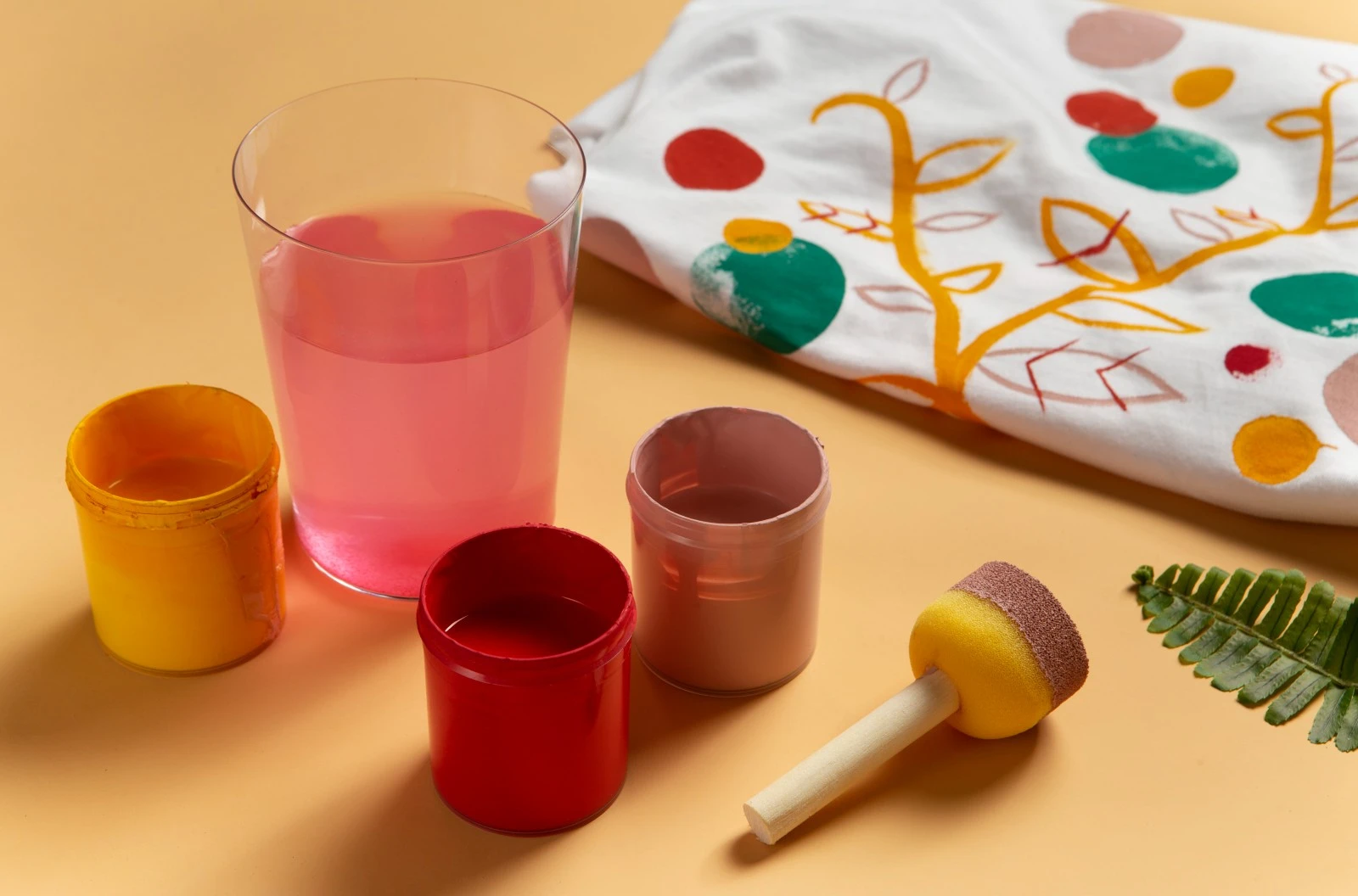TABLE OF CONTENTS
Menu
TABLE OF CONTENTS
Menu
Plastic Colorants
Plastic colorants are essential additives used to impart color to plastic products, enhancing their visual appeal and functionality. These colorants are widely utilized across various industries, from consumer goods to automotive parts, playing a crucial role in product differentiation and brand identity.
Types of Plastic Colorants
Plastic colorants come in several forms, each offering unique benefits and applications:
1. Pigments
Description: Pigments are insoluble particles that provide color to plastics. Known for their excellent opacity and color stability, pigments offer high color strength, UV resistance, and heat stability.
Applications: Commonly used in packaging, automotive components, and consumer electronics.
2. Dyes
Description: Dyes are soluble colorants that offer bright and vivid colors. They blend seamlessly with plastic materials, providing transparent or translucent colors ideal for applications requiring clarity and brightness.
Applications: Often used in clear plastics, toys, and decorative items.
3. Masterbatches
Description: Masterbatches are concentrated mixtures of pigments or dyes encapsulated in a carrier resin, designed for ease of use in the manufacturing process. They ensure consistent color distribution, reduce waste, and improve processing efficiency.
Applications: Widely used in the production of plastic films, fibers, and injection-molded products.
Benefits of Plastic Colorants
Using plastic colorants offers numerous benefits that enhance both the aesthetics and functionality of plastic products:
1. Enhanced Product Aesthetics
Plastic colorants allow manufacturers to create visually appealing products that attract consumers. The wide range of available colors helps in designing products that stand out in the market.
2. Improved Brand Recognition
Consistent use of specific colors helps build and reinforce brand identity. Recognizable color schemes can differentiate products from competitors and foster brand loyalty.
3. Functional Benefits
Certain plastic colorants provide additional functional benefits such as UV protection, heat stability, and improved mechanical properties, extending the lifespan and performance of plastic products.
Applications of Plastic Colorants
Plastic colorants are used in a wide range of applications across various industries:
Packaging: Colorants enhance the visual appeal of products, helping differentiate brands and making products more attractive to consumers.
Consumer Electronics: Used to create vibrant and durable housings for devices like smartphones and laptops.
Automotive Components: Provide UV resistance and heat stability for both interior and exterior parts.
Toys and Recreational Products: Bright and vivid colorants make products more appealing to children and help create engaging designs.
By understanding the different types of plastic colorants and their applications, manufacturers can make informed choices that enhance product quality and appeal. Whether for packaging, consumer electronics, automotive components, or toys, the right colorants can significantly elevate the value and attractiveness of plastic products.
Resin Colorants
Resin colorants are specialized additives used to impart color to various resin materials, such as epoxy, polyester, and polyurethane resins. These colorants are crucial in industries ranging from art and crafts to construction and manufacturing, allowing for the creation of aesthetically pleasing and functional resin products.
Types of Resin Colorants
Resin colorants come in various forms, each offering unique benefits and suitable for different applications:
1. Liquid Pigments
Description: Liquid pigments are concentrated colorants that mix easily with resin. They provide uniform color distribution and are available in a wide range of shades.
Benefits: Easy to use, blend well with resin, and offer vibrant, consistent colors.
Applications: Commonly used in art projects, countertops, and decorative items.
2. Powder Pigments
Description: Powder pigments are finely ground colorants that provide intense and vivid colors. They can be mixed with resin to achieve deep, opaque shades.
Benefits: Offer strong color intensity and are suitable for detailed work.
Applications: Ideal for creating intricate designs, jewelry, and sculptures.
3. Resin Dyes
Description: Resin dyes are soluble colorants that provide transparent or translucent colors. They dissolve completely in resin, allowing for clarity and brightness.
Benefits: Provide clear, bright colors without affecting the transparency of the resin.
Applications: Used in applications where a see-through or translucent effect is desired, such as stained glass effects or clear coatings.
Benefits of Resin Colorants
Using resin colorants offers several advantages that enhance both the aesthetic and functional qualities of resin products:
1. Versatile and Customizable
Resin colorants allow for a high degree of customization. Artists and manufacturers can create a wide range of colors and effects, from opaque to transparent, and even metallic or pearlescent finishes.
2. Enhanced Visual Appeal
Adding colorants to resin enhances the visual appeal of the finished product. Vibrant and consistent colors make the products more attractive and marketable.
3. Improved Product Durability
Certain resin colorants can also improve the durability of the resin. For example, UV-resistant colorants help protect the resin from fading and degradation when exposed to sunlight.
Applications of Resin Colorants
Resin colorants are used in a diverse array of applications, reflecting their versatility and adaptability:
1. Jewelry Making
Resin colorants are popular in the creation of custom jewelry pieces. Artists can mix different colors to produce unique, eye-catching designs.
2. Countertops and Flooring
In construction, resin colorants are used to create custom countertops and flooring solutions. These colorants help achieve a wide range of aesthetic effects, from natural stone looks to vibrant, artistic designs.
3. Art and Crafts
Artists use resin colorants to create stunning artworks, including paintings, sculptures, and decorative pieces. The ability to mix and match colors opens up endless creative possibilities.
4. Industrial Applications
In industrial settings, resin colorants are used to color protective coatings, sealants, and adhesives. They help improve the visibility and aesthetics of these products.
Considerations When Choosing Resin Colorants
Selecting the right resin colorants involves several important considerations to ensure the best results:
1. Compatibility
Ensure the colorants are compatible with the type of resin being used. Compatibility affects the colorant’s performance and the overall quality of the final product.
2. Desired Effect
Consider the desired visual effect, such as opaque, transparent, metallic, or pearlescent. Choose colorants that can achieve these effects.
3. Safety and Compliance
Use colorants that comply with industry regulations and safety standards. This is particularly important for products that will be in contact with food or skin.
4. Processing Conditions
Take into account the processing conditions, such as mixing time and curing temperature. Choose colorants that perform well under these conditions without degrading.
Grout Colorants
Grout colorants are specialized products used to color the grout between tiles, enhancing the aesthetic appeal and uniformity of tiled surfaces. They are particularly valuable in home improvement and commercial projects, where visual continuity and design are crucial.
Types of Grout Colorants
Grout colorants come in several forms, each designed for specific applications and offering unique benefits:
1. Epoxy Grout Colorants
Description: Epoxy grout colorants are mixed with epoxy grout to provide durable, long-lasting color. They are resistant to stains, chemicals, and moisture.
Benefits: Highly durable, resistant to staining and chemicals, ideal for high-traffic areas.
Applications: Used in kitchens, bathrooms, commercial kitchens, and areas exposed to heavy use or moisture.
2. Cementitious Grout Colorants
Description: These colorants are mixed with cement-based grouts. They offer a wide range of colors and are commonly used in residential and commercial tiling.
Benefits: Cost-effective, easy to use, and available in many colors.
Applications: Suitable for indoor and outdoor tiling, including floors, walls, and decorative tiling.
3. Grout Dyes
Description: Grout dyes are used to recolor existing grout. They penetrate the surface to provide a fresh, uniform color without the need to remove the old grout.
Benefits: Easy to apply, cost-effective, and ideal for renovation projects.
Applications: Used for refreshing and updating the color of existing grout in residential and commercial spaces.
Benefits of Grout Colorants
Using grout colorants offers several advantages that improve the appearance and performance of tiled surfaces:
1. Enhanced Aesthetic Appeal
Grout colorants allow for the customization of grout color to match or contrast with tiles, creating a cohesive and visually appealing design. This flexibility helps in achieving the desired look for any space.
2. Improved Uniformity
They provide a consistent color throughout the grout lines, eliminating the appearance of discolored or stained grout. This uniformity enhances the overall cleanliness and attractiveness of the tiled surface.
3. Durability and Protection
Certain grout colorants, especially those used with epoxy grout, add durability to the grout lines. They make the grout resistant to stains, chemicals, and moisture, prolonging the lifespan of the tiled surface.
4. Easy Renovation
Grout dyes make it easy to update and refresh the color of existing grout without the need for extensive renovation. This convenience is particularly beneficial for DIY projects and quick home improvements.
Applications of Grout Colorants
Grout colorants are used in a variety of settings, reflecting their versatility and effectiveness:
1. Bathrooms and Kitchens
Grout colorants are commonly used in bathrooms and kitchens to create stylish and functional spaces. They help in maintaining the cleanliness and visual appeal of tiled surfaces in these high-moisture areas.
2. Outdoor Tiling
For patios, walkways, and outdoor kitchens, grout colorants provide UV resistance and weather durability. They ensure that the grout lines remain vibrant and intact despite exposure to the elements.
3. Commercial Spaces
In commercial settings such as restaurants, hotels, and retail stores, grout colorants are used to create professional and attractive environments. The added durability and stain resistance are essential for maintaining high-traffic areas.
4. Residential Flooring
Grout colorants enhance the look of tiled floors in living rooms, hallways, and other residential areas. They allow for creative designs and ensure that the grout lines complement the overall décor.
Considerations When Choosing Grout Colorants
Selecting the right grout colorants involves several considerations to ensure optimal results:
1. Compatibility
Ensure the colorants are compatible with the type of grout being used, whether epoxy, cementitious, or pre-existing grout.
2. Desired Color and Finish
Choose colorants that achieve the desired hue and finish, whether you want a matching, contrasting, or custom look.
3. Durability Requirements
Consider the durability needed for the specific application. High-traffic and high-moisture areas may require more robust colorants, such as those used with epoxy grout.
4. Ease of Application
Evaluate the ease of application, especially for DIY projects. Some colorants may require professional installation for the best results.
Ceramic Glaze Colorants
Ceramic glaze colorants are essential ingredients used to add color to ceramic glazes, providing vibrant and durable finishes to pottery and ceramic tiles. These colorants enable artists and manufacturers to achieve a wide range of colors and effects, enhancing the aesthetic and functional qualities of ceramic products.
Types of Ceramic Glaze Colorants
Ceramic glaze colorants come in various forms, each offering unique properties and applications:
1. Oxides
Description: Oxides are inorganic compounds that produce a wide range of colors in ceramic glazes. Common oxides include iron, cobalt, copper, and manganese.
Benefits: Oxides are stable at high temperatures and provide consistent, long-lasting colors.
Applications: Widely used in pottery, tiles, and decorative ceramics to achieve rich, natural hues.
2. Stains
Description: Ceramic stains are pre-mixed colorants made from a combination of oxides and other materials. They offer precise and predictable colors.
Benefits: Stains provide a wide color palette, including bright and intense shades that are difficult to achieve with oxides alone.
Applications: Used in glazes for tiles, pottery, and art ceramics to create vivid and consistent colors.
3. Engobes
Description: Engobes are colored slips applied to ceramics before glazing. They consist of clay mixed with colorants and water.
Benefits: Engobes allow for a wide range of decorative techniques, including painting, dipping, and spraying.
Applications: Ideal for creating intricate designs and patterns on ceramic surfaces.
Benefits of Ceramic Glaze Colorants
Using ceramic glaze colorants offers several advantages that enhance the aesthetic and functional qualities of ceramic products:
1. Vibrant and Long-Lasting Colors
Ceramic glaze colorants provide vibrant and durable colors that withstand high firing temperatures, ensuring the finished product remains attractive and resilient.
2. Creative Design Possibilities
These colorants offer a vast palette of colors and effects, enabling artists and manufacturers to experiment with different styles and techniques. This versatility supports creativity and innovation in ceramic design.
3. Enhanced Durability
Certain colorants, such as oxides, enhance the durability of the glaze, making it resistant to wear, scratching, and fading. This is particularly important for functional ceramics like tiles and dinnerware.
4. Surface Protection
Glazes colored with these colorants not only enhance the visual appeal but also protect the ceramic body from moisture, stains, and chemical damage.
Applications of Ceramic Glaze Colorants
Ceramic glaze colorants are used in various applications across the ceramics industry, reflecting their versatility and effectiveness:
1. Pottery
Pottery artists use ceramic glaze colorants to create unique and colorful pieces. From functional items like bowls and mugs to decorative sculptures, these colorants bring the artist’s vision to life.
2. Tiles
In the tile industry, ceramic glaze colorants are essential for producing colorful and durable tiles for walls, floors, and backsplashes. They allow for a wide range of designs, from solid colors to intricate patterns.
3. Decorative Ceramics
Decorative items such as vases, figurines, and ornaments benefit from the vibrant and varied colors provided by ceramic glaze colorants. These products often serve as statement pieces in home decor.
4. Industrial Ceramics
In industrial applications, glaze colorants are used to enhance the functionality and aesthetics of ceramic components. This includes items like insulators, heat-resistant tiles, and sanitary ware.
Considerations When Choosing Ceramic Glaze Colorants
Selecting the right ceramic glaze colorants involves several important considerations to ensure the best results:
1. Compatibility with Glaze
Ensure the colorants are compatible with the specific glaze formula being used. Compatibility affects the color outcome and overall quality of the glaze.
2. Firing Temperature
Consider the firing temperature required for the glaze. Some colorants may change color or lose intensity at different temperatures, so it’s crucial to choose colorants that perform well under your specific firing conditions.
3. Desired Color and Effect
Decide on the desired color and effect, such as opaque, transparent, matte, or glossy. Different colorants can achieve various finishes and hues, so select those that align with your artistic vision or product requirements.
4. Safety and Compliance
Use colorants that comply with safety regulations, especially for items that will come into contact with food or drink. Ensure the colorants are non-toxic and safe for use in dinnerware and other functional ceramics.
Colorants for Candles
Colorants for candles are specialized additives used to impart color to candle wax, enhancing the visual appeal and overall aesthetic of the finished product. These colorants are crucial in the candle-making industry, allowing manufacturers and DIY enthusiasts to create a wide range of colorful and attractive candles for various occasions.
Types of Colorants for Candles
Colorants for candles come in several forms, each offering unique benefits and suitable for different applications:
1. Liquid Dyes
Description: Liquid dyes are concentrated colorants that are easy to mix with melted wax. They provide uniform color distribution and are available in a wide range of shades.
Benefits: Easy to use, blend well with wax, and offer vibrant, consistent colors.
Applications: Commonly used in both professional candle production and DIY projects.
2. Block Dyes
Description: Block dyes are solid colorants that are cut into small pieces and melted into the wax. They provide intense, vivid colors and are highly concentrated.
Benefits: Offer strong color intensity and are cost-effective for large batches of candles.
Applications: Ideal for creating deeply colored candles and can be used in various types of wax.
3. Pigment Powders
Description: Pigment powders are finely ground colorants that provide bright and opaque colors. They are mixed with wax to achieve the desired hue.
Benefits: Provide strong color opacity and are suitable for specialty candles.
Applications: Used in decorative and artistic candles where bold, opaque colors are desired.
4. Natural Colorants
Description: Natural colorants are derived from plants, minerals, and other natural sources. They offer eco-friendly and non-toxic alternatives to synthetic colorants.
Benefits: Safe for use in candles, environmentally friendly, and can provide unique, natural shades.
Applications: Popular in handmade and organic candles, where natural ingredients are preferred.
Benefits of Using Colorants for Candles
Using colorants for candles offers several advantages that enhance both the aesthetic and functional qualities of the candles:
1. Enhanced Visual Appeal
Colorants allow for the creation of visually appealing candles that attract consumers. A wide range of available colors helps in designing candles that stand out in the market.
2. Customization and Creativity
Candle makers can use colorants to create custom colors and designs, catering to specific themes, holidays, and customer preferences. This flexibility supports creativity and innovation in candle design.
3. Brand Differentiation
Consistent use of specific colors can help build and reinforce brand identity. Recognizable color schemes can differentiate products from competitors and foster brand loyalty.
4. Improved Ambiance
Colored candles can enhance the ambiance of a space, creating a warm and inviting atmosphere. They are often used in home decor, special events, and as gifts.
Applications of Colorants for Candles
Colorants for candles are used in a wide range of applications, reflecting their versatility and effectiveness:
1. Decorative Candles
Colorants are essential in making decorative candles that serve as centerpieces and home decor items. These candles often feature intricate designs and vibrant colors.
2. Scented Candles
In scented candles, colorants add visual appeal that complements the fragrance. The combination of color and scent enhances the overall sensory experience.
3. Themed Candles
Themed candles, such as those for holidays, birthdays, and other special occasions, often use colorants to match the theme. For example, red and green for Christmas or orange and black for Halloween.
4. Specialty Candles
Specialty candles, such as layered or gradient candles, require precise colorants to achieve the desired effects. These candles are often handmade and cater to niche markets.
Considerations When Choosing Colorants for Candles
Selecting the right colorants for candles involves several important considerations to ensure the best results:
1. Compatibility with Wax
Ensure the colorants are compatible with the type of wax being used, whether paraffin, soy, beeswax, or another type. Compatibility affects the colorant’s performance and the overall quality of the candle.
2. Desired Color and Intensity
Choose colorants that achieve the desired hue and intensity. Some colorants provide transparent or translucent effects, while others offer opaque and vibrant colors.
3. Safety and Compliance
Use colorants that comply with safety regulations and standards, especially for candles that will be used indoors. Ensure the colorants are non-toxic and safe for burning.
4. Ease of Use
Consider the ease of use, particularly for DIY projects. Liquid dyes and block dyes are generally easier to handle and mix with wax compared to pigment powders.
Conclusion
Colorants play a crucial role in enhancing the aesthetic and functional qualities of products across various industries, from plastic and resin to grout, ceramic glazes, and candles. Understanding the different types of colorants and their applications helps manufacturers and DIY enthusiasts make informed choices. Whether creating vibrant consumer goods, durable industrial products, or beautiful art pieces, selecting the right colorants ensures high-quality, visually appealing results. Embrace the versatility and creativity offered by colorants to elevate your projects and products, meeting both practical needs and aesthetic desires.
Contact Us
Questions or looking for a quote?





